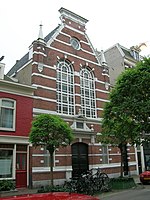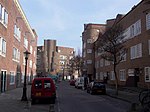Le Restaurant
Michelin Guide starred restaurants in the NetherlandsRestaurant stubsRestaurants in AmsterdamUse British English from September 2013
Le Restaurant is a restaurant in Amsterdam, Netherlands. It is a fine dining restaurant that was awarded one Michelin star for the period 2010-present.GaultMillau awarded the restaurant 16 out of 20 points.Head chef of Le Restaurant is owner Jan de Wit. Previously Graham Mee was also a head chef, but he left in 2016 to start his own restaurant.Chef Patron Jan de Wit opened the restaurant in 2008.On 3 December 2016 the restaurant closed its doors, due to problems with the tenancy contract. Jan de Wit announce at that time that he was looking for another location.
Excerpt from the Wikipedia article Le Restaurant (License: CC BY-SA 3.0, Authors).Le Restaurant
Tweede Jan Steenstraat, Amsterdam Zuid
Geographical coordinates (GPS) Address Website Nearby Places Show on map
Geographical coordinates (GPS)
| Latitude | Longitude |
|---|---|
| N 52.355602777778 ° | E 4.8982194444444 ° |
Address
Artist
Tweede Jan Steenstraat 1
1073 VK Amsterdam, Zuid
North Holland, Netherlands
Open on Google Maps











